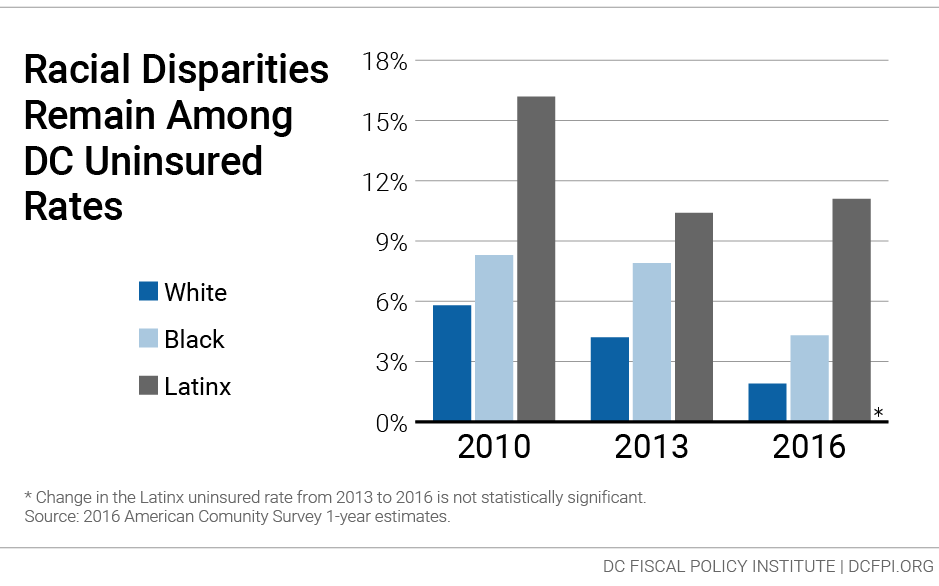DC may have the fourth lowest uninsured rate in the nation, but the latest data show persistent racial disparities in health coverage rates, as well as an increase last year in the uninsured rate for children. This means that amidst the District’s incredible gains, more is needed to ensure that all residents are aware of and accessing their coverage options.
The latest Census updates for 2016 show that just 3.9 percent of DC residents—26,000 people—lacked health insurance in 2016. This rate is well below the national average of 8.6 percent, as well as the rates in Maryland (6.1 percent) and Virginia (8.7 percent). This low uninsured rate largely reflects in DC’s adoption of critical components of the Affordable Care Act (ACA), which helped provide more health coverage options to DC residents of all incomes and reduced barriers to care. Thanks to the ACA, DC’s uninsured rate is well below its pre-ACA uninsured rate of 7 percent.

But the reduction in the uninsured rate has not been uniform. While just 1.9 percent of White District residents lack health coverage, this number is more than double for Black residents – at 4.3 percent. Latinx residents are the racial/ethnic group most likely to go without coverage—with 11.1 percent uninsured. To be sure, these groups have all seen their uninsured rate decrease from the onset of the ACA in 2010, but the gap among them has yet to be closed.
The latest figures also show that coverage rates actually worsened for children under 18 last year, the only age group to see an increase in their uninsured rate. Some 3.1 percent of children were uninsured in 2016, up from 1.5 percent in 2015. That’s an additional 2,000 children without insurance.
These latest Census updates tell us that DC needs to be more aggressive in reaching its remaining uninsured residents, including people of color and youth, by promoting the public and private health coverage options available to residents like DC Health Link, Medicaid, and the Healthcare Alliance. This is in some ways a more difficult feat amidst national uncertainty over health reform and slashed funding for national enrollment outreach. At the same time, with health insurance options available to virtually all ages, incomes, and citizenship statuses, no one in the District should have go without coverage.
To print a copy of today’s blog, click here.
